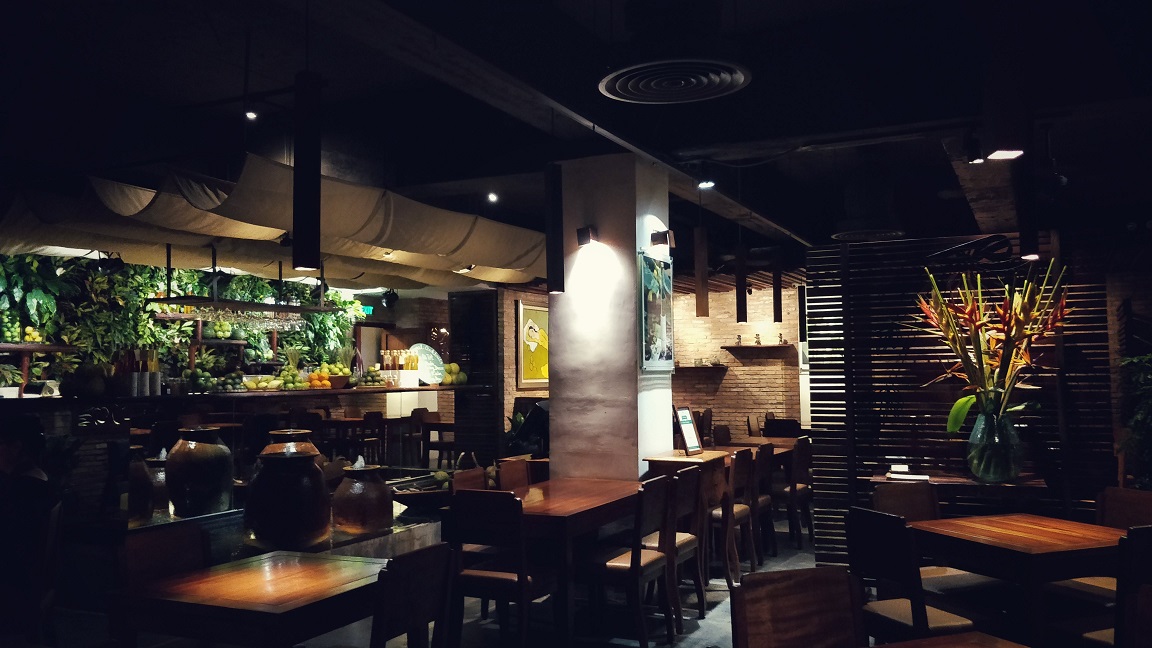Asian Fusion Restaurant: A Special Dining Experience in the Heart of Islamabad
Wiki Article
Experience the Fusion of Cultures in Our Pan-Asian Dining establishment's Eastern Cuisine Offerings
Each meal on our food selection is a thoroughly crafted narrative, attracting on the abundant heritage of Chinese, Japanese, Thai, Korean, and Vietnamese cuisines. As you explore the details of our offerings, you'll run into a harmony of tastes that shows the dynamic diversity of these societies.Exploring Chinese Cooking Traditions
Chinese cooking customs boast a rich tapestry of tastes and techniques that reflect the nation's huge geographic and social diversity. From the intense flavors of Sichuan food to the delicate dark amount of Cantonese price, each area presents an one-of-a-kind cooking identification that has actually been refined over centuries. The approach of stabilizing flavors-- sweet, sour, bitter, spicy, and salty-- lies at the heart of Chinese food preparation, producing meals that are not only tasty but likewise harmonious.Key components such as soy sauce, ginger, garlic, and sesame oil develop the backbone of lots of standard dishes, adding to the aromatic and distinct accounts that define Chinese cuisine. Strategies like stir-frying, steaming, and braising show the ability and virtuosity entailed in Chinese food preparation, each technique improving the all-natural flavors of the ingredients.
Regional specializeds, such as Peking duck from Beijing, the refined, full-flavored flavors of Shanghai's soup dumplings, and the bold, extreme heat of Sichuan warm pot, use an insight into the culinary heritage of China. In a Pan-Asian dining establishment setting, these standard dishes can be adapted to include different impacts, providing clients a nuanced exploration of Chinese cooking creativity.
Enjoying Japanese Specials

Begin your culinary trip with sashimi, where the quality of the fish takes spotlight, chopped adeptly to enhance its natural flavor. Our sushi provides a harmonious blend of vinegared rice and fresh seafood, a tribute to the nuance of Japanese gastronomy. For a cozy, comforting experience, try our miso soup, a staple that embodies the umami-rich profile of fermented soybeans.

Discovering Thai Taste Profiles
As we relocate from the fine-tuned elegance of Japanese food, the vibrant and vibrant flavors of Thai cooking invite exploration. Thai cuisine is renowned for its harmonious equilibrium of sweet, sour, salted, and hot elements, producing a symphony of preferences that mesmerize the taste. Trick active ingredients like lemongrass, kaffir lime leaves, galangal, and Thai basil give aromatic complexity, while fish sauce and shrimp paste give depth and umami.
One can not talk about Thai taste accounts without discussing the legendary dishes that exemplify its cooking philosophy. The renowned Tom Yum soup, with its great smelling broth, integrates spicy, sour, and mouthwatering notes, delivering a taste experience that is both stimulating and calming. Fine dining experience Islamabad. Similarly, Green Curry, understood for its rich coconut milk base, showcases the fragile interaction in between sweet taste and spiciness, improved by fresh natural herbs and seasonings
Thai food also places a strong emphasis on texture, blending crunchy vegetables with tender meats or seafood, as seen in dishes like Som Tum (eco-friendly papaya salad) This balance of structures adds an extra layer of pleasure to the already complex flavor accounts. Through these distinctive elements, Thai cuisine offers a dynamic and unforgettable cooking trip.
Taking Pleasure In Korean Flavor and Warmth
Korean food, with its emphasis on vibrant spices and intense heat, supplies a special exploration of flavors distinctive from its Oriental equivalents. At the heart of this culinary experience is gochujang, a fermented red chili paste that supplies a structure of wonderful warmth and deepness. Chinese food Islamabad. This versatile component is crucial in meals such as bibimbap and bulgogi, instilling them with its particular spicy-sweet profileOne more keystone of Oriental flavor is kimchi, a fermented vegetable dish most typically made from napa cabbage and skilled with chili garlic, ginger, and pepper. Kimchi not only adds a piquant kick to any kind of meal yet additionally offers probiotic advantages, making it a staple in Korean dining.
Furthermore, Korean barbecue highlights the interplay of flavor and warmth via marinades that frequently integrate gochugaru, a rugged chili powder. This boosts the tastes of smoked meats, developing a nuanced and abundant preference experience.
Our Pan-Asian restaurant proudly embraces these elements, offering diners an authentic taste of Korean warmth and seasoning. Each recipe is crafted to ensure that the vibrant flavors and textures of Korean food beam through, giving a remarkable eating experience.
Sampling Vietnamese Quality
Vietnamese cuisine is renowned for its remarkable quality and lively, herbaceous tastes, producing an unique culinary identification within Asia. This harmony is evident in recipes like pho, a great smelling noodle soup that integrates aromatic natural herbs such as cilantro and basil with the abundant depth of a beef or poultry brew.Quality is further exhibited in the iconic summer season rolls, called gỏi cuốn. These translucent rice paper rolls are loaded with crisp vegetables, fresh herbs, and tender shrimp or pork, gone along with by a tasty peanut dipping sauce. The fragile yet robust tastes highlight the importance Vietnamese cuisine put on fresh components.
Our Pan-Asian restaurant celebrates this cooking custom by sourcing the finest active ingredients to recreate authentic Vietnamese recipes. The emphasis on natural herbs and fresh fruit and vegetables makes sure that each dish is not only aesthetically appealing yet also a testimony to the vivid culture where it originates. Experience Vietnamese freshness with us, where every bite narrates of custom and taste.
Conclusion
The Pan-Asian dining establishment offers a distinct cooking experience by sympathetically blending the abundant practices of asian restaurant isb Chinese, Japanese, Thai, Korean, and Vietnamese cuisines. Each meal is diligently crafted to emphasize the unique strategies and genuine components of these varied societies, creating a cohesive yet different gastronomic trip. With a concentrate on equilibrium, freshness, and boldness, the restaurant goes beyond social borders, supplying restaurants with an exemplary combination of flavors that commemorates the essence of Asian culinary heritage.While Japanese food is renowned for its simplicity and sophistication, it likewise uses a deepness of taste achieved via meticulous preparation and a regard for seasonal active ingredients.As we relocate from the fine-tuned elegance of Japanese cuisine, the bold and vibrant flavors of Thai cooking invite expedition.One can not discuss Thai taste accounts without stating the legendary recipes that exhibit its cooking approach.Korean cuisine, with its emphasis on bold seasonings and intense warm, uses a special exploration of flavors distinct from its Asian equivalents.Vietnamese food is renowned for its exceptional freshness and vibrant, floral tastes, creating a distinct cooking identification within Asia.
Report this wiki page